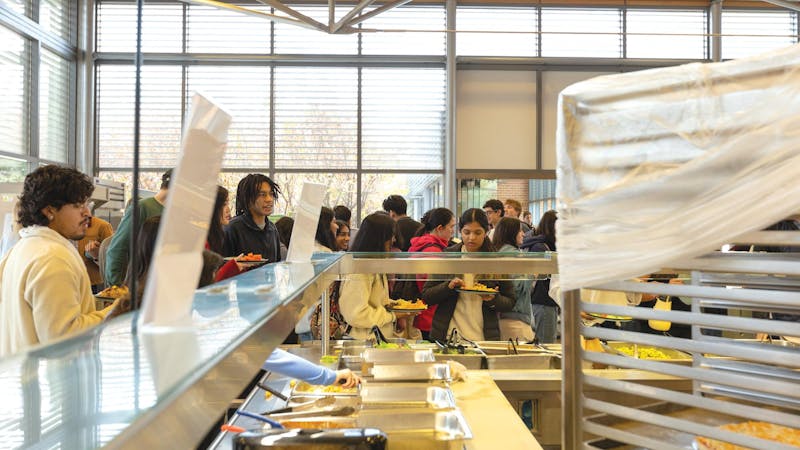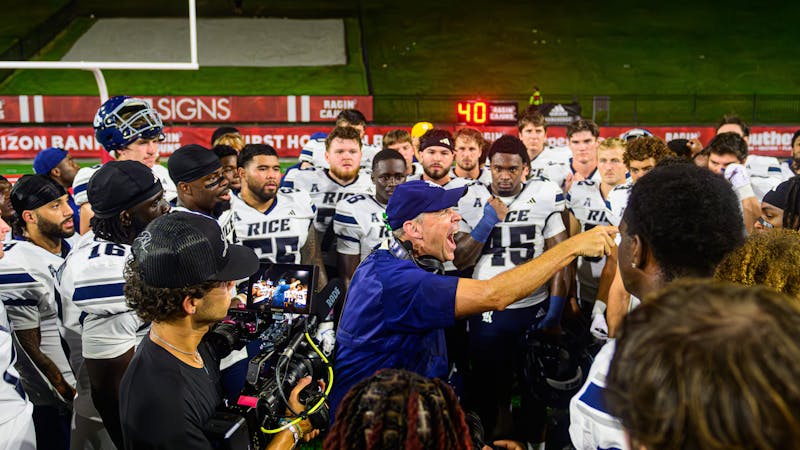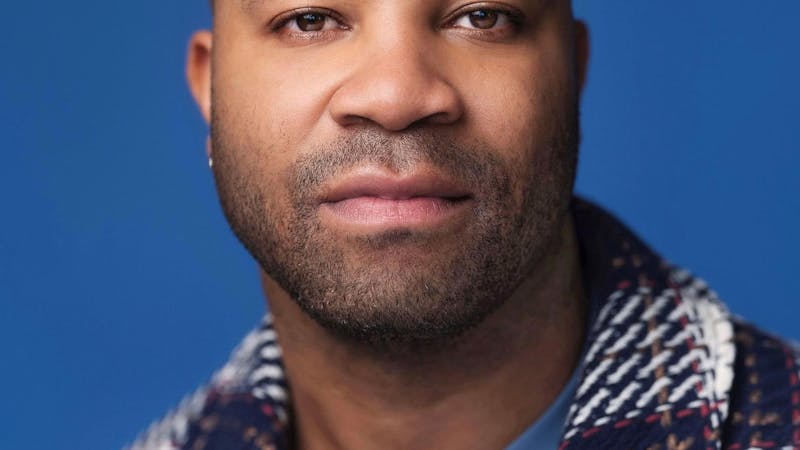REMS director returns after 15 years
More than a decade after leaving Rice, Mark Escott (Jones '96) returned to the campus as medical director of the Rice Emergency Medical Services, which he founded as an undergraduate student in 1995. Escott, who previously worked for two years as REMS director after his graduation from Rice, started his new position in July. As medical director, Escott will set and approve the medical protocols followed by REMS. Along with this responsibility, he has taken up a position as a team doctor for the Athletic Department at Rice.Escott is proud of the growth REMS has shown, but said there will be changes and improvements to the organization. He said that an aspect of REMS that has not expanded as much as he would have liked is the participation of faculty and staff as responders. This expansion would reinforce REMS as more than a student organization.
"We want people to see us not as students who are responding but as responders who are also students," Escott said.
Escott said REMS will be appearing at more Rice events and will adjust REMS presence based on the probability of emergency calls at each event. Escott said REMS is likely to receive a higher volume of emergency calls on weekends.
REMS Captain Hashim Zaidi said that REMS has begun to increase its presence at Rice events already over the past few two months. Zaidi, a Will Rice College senior, said REMS Lieutenant Faroukh Mehkri has been pushing for more obvious REMS presence at Rice events this year with the hope that it will encourage students to place more trust in REMS.
"You will see us around more," Zaidi said. "We are trying to make ourselves more visible."
Another goal for REMS, Escott said, is to acquire an ambulance, which would ensure optimum service. According to Escott, emergency medical technicians arrive at the scene where a call has been made in an average of two minutes, while the city of Houston takes 10 minutes to arrive on campus with a vehicle, not necessarily an ambulance. However, Escott said that patients have expressed their frustration about the waiting time for an ambulance ride to a hospital, an issue that he said has persisted since the founding of REMS.
In the past, patients with chest pains have had to wait half an hour for transport to a hospital, a grave issue Escott said must be addressed.
"The care they need is literally across the street, and we can't get them there," Escott said.
Concerning funding for REMS's future plans and hopes for an ambulance, Escott said that it may take several years to raise enough money. An ambulance, Escott said, would require a capital expense of at least $100,000. Escott also said REMS would probably have to add another part-time staffer because of the added responsibilities of maintaining an ambulance, but he believes that an ambulance would add to the high quality of services REMS offers to its patients.
Zaidi shares Escott's opinion of REMS's high quality of care. As an example, he said, REMS has the only first responder advanced life support care in Harris County, meaning they are certified to provide pre-hospital care for medical emergencies. Advanced life support care is obtained through extensive training in advanced skills and intermediate certification, only one level below EMTs trained as paramedics. According to Zaidi, EMTs in REMS go through very high-level training and understand the seriousness of their responsiblities. Despite their extensive training, Zaidi said, the students' trust in EMTs is REMS's most valuable commodity.
"We're helping our friends, neighbors, and community members," Zaidi said. "They are people we know. Because of that, we have more passion for [our jobs]."
According to Zaidi, REMS is receiving more calls than ever, which gives the organization more opportunities to grow and encourages increased commitment from the EMTs.
Sid Richardson College junior Stephen Janda recalled the quick response of REMS during his freshman year when he called for help after discovering a rash caused by celebratory body paint. Janda said classmates advised him to call REMS.
"I felt really silly for calling for something that may or may not have been serious," he said.
Janda said REMS checked his vitals and evaluated the situation, showing concern for his health and reassuring him when he apologized repeatedly for calling for something that turned out to not have serious consequences.
"They were very supportive, helping me through my paranoia," Janda said.
REMS Director Lisa Basgall, who handles administrative oversight for REMS on campus, said Escott is a valuable contribution to the REMS team. Basgall, who took up the position of REMS director last year, said that the return of Escott gives REMS an opportunity to learn more about the history of the organization and, in doing so, learn how to improve for the future. She said REMS will focus on increasing care capabilities, expanding the portion of REMS members with imtermediate certification, and increasing involvement of not only undergraduates, but also faculty, staff, alumni and graduate students.
"He has a lot of history with the service and he shares the same vision of having our students run the service [as much as possible] and provide EMS for the campus," Basgall said.
Escott said that he conceived the idea of REMS shortly after his matriculation in 1992. Having been an EMT in high school, Escott had already had five years of EMS experience. He was inspired by his volunteer work as part of the Cypress Creek EMS to create a similar organization at Rice. Escott and Noah Reiter (Jones '00) revised his plans for REMS together, and with Reiter handling communications and the support of Rice University Police Department in providing data comparing the RUPD's response times to emergency calls and the city of Houston's response times, Escott received permission to start REMS in the fall of 1995 with a discretionary fund of $8,000. Each residential college also contributed $400 to help REMS buy equipment. The first EMT class, which consisted of about 20 students, was offered in spring 1996 as a non-credit class to prepare students for the operational portion of REMS, which started in October 1996.
According to Escott, additional plans for improvement of REMS are under consideration or in progress. One plan he hopes will soon become effective is the use of electronic charts instead of paper charts to store data. Zaidi said the service REMS will be using for electronic charting is through a reputable and secure company that handles electronic data specific to health information. This, he said, is for convenient data storing and information security. Basgall also said that using electronic data will allow for better access and will make it more convenient for REMS to share statistical information with other interested parties without providing protected health information, as medical records.
In addition to his work at REMS, Escott has a full-time job at Baylor College of Medicine, where he is assistant professor of emergency medicine and assistant director for the division of EMS and disaster medicine. He said he believes strongly that his involvement with REMS has been instrumental in shaping his qualifications for his job at Baylor College of Medicine.
Escott said that as part of the effort to bring REMS to a more advanced level, plans are being discussed about increased involvement with BCM, including having undergraduate EMTs participate in emergency medicine research there and adding additional emergency medicine credit courses which may be co-taught at Baylor. Additional plans include the EMTs gaining shadowing experience at Ben Taub General Hospital, which he said would diversify the EMTs' exposure to serious medical emergencies.
Zaidi said Escott's return as medical director is a tremendous opportunity for REMS because of the wealth of knowledge and resources that Escott brings with him. Despite Escott's multiple other commitments, Zaidi said, he is dedicated to REMS and is more involved than most medical directors because of his close ties to REMS. Zaidi said he believes that REMS will continue to grow and improve.
"[Escott] coming back - it felt like the prodigal son returning," Zaidi said. "It felt so right, almost like the position was waiting for him.
More from The Rice Thresher

Over 1,000 students petition against new meal plan
When Konstantin Savvon opened the Housing and Dining email announcing the new unlimited meal plan, he was instantly concerned about the impact on off-campus students like himself.

Rice football wins season opener under new coach
For the first time since 2018, Rice football opened its season with a victory. Scott Abell was soaked with yellow Powerade following a 14-12 win on the road Saturday against the University of Louisiana at Lafayette, which won 10 games and made it to the Sun Belt Conference championship last season.

Acting like an athlete: Rice basketball alum takes on Broadway
Underneath Chadd Alexander’s Broadway costume, there’s ankle tape and wrist braces — same protective gear he wore as a walk-on basketball player at Rice, though now he’s performing eight shows a week in the ensemble of “Harry Potter and the Cursed Child” instead of running conditioning drills in Tudor Fieldhouse.

Please note All comments are eligible for publication by The Rice Thresher.